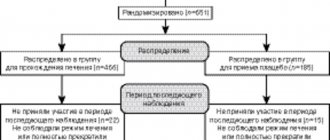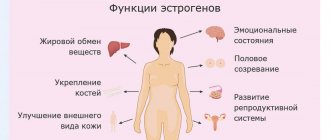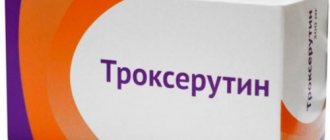Pharmacological properties of the drug Estrogel
Estrogen preparation for external use. Pharmacological features are determined by the presence of estradiol, which is a follicular hormone. During treatment with the drug, the severity of the manifestations of menopausal syndrome (including hot flashes, increased sweating, dystrophic changes in the vaginal mucosa, mood instability) significantly decreases. In women during menopause, the use of Estrogel prevents demineralization of bone tissue and the development of osteoporosis. Prevention of osteoporosis is individualized and proportional to the dose of available estrogen. When using 2.5 g of gel per day for 21 of 28 days, the effect is achieved in approximately 89% of women. The transdermal route of administration allows the use of natural estrogen produced by the ovaries, 17β-estradiol, for treatment. This pathway eliminates the effect of first pass through the liver, prevents stimulation of the synthesis of angiotensinogen, LDL and some coagulation factors, which reduces the risk of developing cardiovascular diseases, thromboembolism and metabolic disorders. When the gel is applied, the alcohol quickly evaporates and 17β-estradiol penetrates the skin, with most of it directly entering the systemic circulation, and a certain amount is retained in the subcutaneous fatty tissue and enters the systemic circulation gradually. The metabolism and excretion of 17β-estradiol when using Estrogel corresponds to the biotransformation and excretion of natural estrogens. The level of 17β-estradiol in the blood plasma of women during menopause when using 2.5 g of gel per day is 80 pg/ml. This corresponds to the normal estrone/estradiol ratio in women of childbearing age.
Estrogel transdermal gel 0.0006/g 80g N1 dispenser bottle
Action
The active ingredient of the drug Estrogel® - 17beta-estradiol - is chemically and biologically identical to endogenous human estradiol.
It has an estrogenic effect on the main target organs: ovaries, endometrium, vaginal epithelium, mammary glands, urethra, hypothalamus, pituitary gland, liver - similar to the action of endogenous estrogens in the follicular phase of the menstrual cycle.
Replenishes estrogen deficiency in women during menopause and reduces the severity of menopausal disorders, including hot flashes, increased sweating at night, atrophic changes in the genitourinary tract (atrophic vulvovaginitis, dyspareunia, urinary incontinence), psycho-emotional disorders.
The clinical effectiveness of Estrogel® in the treatment of menopausal symptoms is comparable to that of oral estrogens.
Estradiol helps reduce the concentration of total cholesterol without changing the cholesterol/HDL ratio.
It has a procoagulant effect, increases the synthesis in the liver of vitamin K-dependent blood clotting factors (II, VII, IX, X), reduces the concentration of antithrombin III.
Estradiol prevents bone loss associated with natural menopause or oophorectomy.
Estrogen deficiency during postmenopause is associated with a decrease in bone mineral density (BMD). The effect of estrogen on BMD is dose-dependent and appears to last as long as hormone replacement therapy (HRT) is administered. After stopping HRT, BMD begins to decrease at the same rate as before it began. Data from the randomized, placebo-controlled Women's Health Initiative (WHI) trial and a meta-analysis of clinical trials showed that HRT with estrogens alone or estrogens plus progestins in healthy postmenopausal women reduces the risk of hip, vertebral and other osteoporotic fractures. There is also limited evidence that HRT can prevent bone fractures in women with low BMD and/or established osteoporosis.
Pharmacokinetics
Absorption and distribution
When the gel is applied topically to a large surface of the skin, the alcohol evaporates and approximately 10% of estradiol is absorbed through the skin into the vascular system, regardless of the patient’s age. Daily use of 2.5 g or 5 g of Estrogel® over an area of 400-750 cm2 leads to a gradual increase in the concentration of estradiol and estrone and ensures their equilibrium concentration in the blood plasma after approximately 3-5 days in a ratio characteristic of the beginning of the middle follicular phase of menstruation cycle. When using the drug Estrogel® in 17 postmenopausal women once a day by applying it to the back surface of one arm from wrist to shoulder for 14 days, the maximum concentration (Cmax) of estradiol and estrone in the blood plasma on the 12th day of use was 117 pg/ml and 128 pg/ml, respectively. The average concentration of estradiol and estrone in the blood plasma over a 24-hour period after administration of 2.5 g of Estrogel® on the 12th day of administration was 76.8 pg/ml and 95.7 pg/ml, respectively.
Metabolism and excretion
Estradiol is metabolized mainly in the liver to estriol, estrone and their conjugated metabolites (glucuronides, sulfates). These metabolites undergo enterohepatic recirculation. After cessation of treatment, estradiol concentrations return to baseline levels after approximately 76 hours.
Use of the drug Estrogel
Estrogel is prescribed in cycles - 24-28 days per month. Doses and duration of treatment are determined individually. One dose (2.5 g of gel) is applied once a day in the morning or evening to clean skin of the abdomen, lumbar region, thighs, shoulders or forearms in a thin layer until completely absorbed. If necessary, after 2-3 cycles, the dose can be adjusted depending on the clinical picture or estrogen deficiency. The gel should be applied in a thin layer to the surface of the skin (to the above areas). Massaging is not recommended. Avoid contact of the gel with the mammary glands and mucous membranes. Application is correct and effective if the gel is absorbed within 2–3 minutes. Mode of application. The gel is applied by the patient independently. To do this, you need to open the tube and pierce the metal membrane using a small punch located in the stopper. To calculate the daily dose, use a plastic dispenser spatula. It is necessary to press the tube over the ruler of the spatula, with 1 dose equal to a column (diameter of a pencil), the length of which coincides with the recess on the ruler. The recess has a dash, which makes it possible to divide the daily dose in half. One tube is designed for 30 doses. Apply the gel in a thin layer to the surface of the skin in the above areas. Should not be massaged. Prevent the gel from getting on the mammary glands and mucous membranes. Application is considered correct and effective if the gel is completely absorbed in less than 2–3 minutes.
Side effects of the drug Estrogel
Most of the following undesirable effects have been observed with oral administration of artificial estrogens. When using Estrogel, side effects rarely occur, but it is recommended to stop using the drug if: cardiovascular failure, thromboembolic complications, cholestatic jaundice, benign mastopathy or uterine tumor (for example, an increase in the size of fibroids), liver adenoma (possible development of internal bleeding), galactorrhea ( pituitary adenoma must be excluded). Dose adjustment is required when signs of estrogen deficiency appear (hot flashes, frequent headaches, migraines, dry vaginal mucosa, eye irritation when using contact lenses) and signs of their high content (nausea, vomiting, abdominal pain, flatulence, engorgement of the mammary glands, irritability, peripheral edema, feeling of heaviness in the legs, increased secretion from the cervix). Possible uterine bleeding (the cause must be determined), exacerbation of epilepsy, chloasma or melanosis.
Special instructions for the use of the drug Estrogel
Since long-term use of estrogens in the form of monotherapy increases the risk of developing endometrial cancer, it is necessary to take a progestin drug for at least the last 12 days of each monthly cycle of treatment with Estrogel. Before starting treatment, it is necessary to conduct a complete clinical and gynecological examination. Periodic examinations should be carried out (including mammography) during drug therapy; their frequency and volume are determined individually. Particular attention should be paid to examining the mammary glands, uterus, measuring blood pressure and body weight, the state of the cardiovascular system and metabolism. Constant monitoring of the patient's condition is necessary in the following cases: ischemic stroke due to atherosclerosis, cerebral hemorrhage, retinal vein occlusion, obesity (due to the risk of developing venous thrombosis), bed rest and preparation for planned surgery (it is advisable to discontinue drug treatment 1 month before surgery), increased blood pressure. Careful monitoring is necessary for patients with endometriosis, uterine fibroids, endometrial hyperplasia, benign skin tumors, systemic lupus erythematosus, prolactin-secreting pituitary tumor, porphyria, with a history of recurrent cholestasis, renal failure, epilepsy, asthma, liver dysfunction, otospongiosis, a family history of history of breast cancer. Pregnancy and lactation: the use of the drug is not indicated. Women who took estrogens or estroprogestogens in the early stages of pregnancy do not need to undergo artificial termination of pregnancy.
Instructions for use ESTROGEL (OESTROGEL)
- For women using estrogen-only
- For women using HRT containing estrogens and gestagens
- Per 1000 women in the placebo group
- Per 1000 women from the group where combined estrone and progestogen-based HRT (CEE + MPA) was used, the number of additional
cases of invasive breast cancer will be: - The risk of endometrial hyperplasia and carcinoma is increased by estrogen monotherapy over a long period. Adding progestogen for at least 12 days per cycle in women without a hysterectomy significantly reduces this risk.
- Intermenstrual bleeding is possible during the first months of treatment. If they appear after several months of therapy or persist after stopping treatment, it is necessary to find the cause, which may require an endometrial biopsy to exclude malignant transformation.
- Monotherapy with estrogens can cause malignant transformation of residual foci of endometriosis. Therefore, in women with endometriosis after hysterectomy, when the absence of residual endometriosis cannot be guaranteed, the addition of progestins to estrogen replacement therapy is recommended.
-from 0 to 3 (average 1.5) over 5 years of therapy
-from 3 to 7 (average 5) for 10 years of therapy.
-from 5 to 7 (average 6) over 5 years of therapy
-from 18 to 20 (average 19) for 10 years of therapy.
According to estimates from the WHI study, it was shown that when followed for 5.6 years in women aged 50 to 79 years using HRT containing estrogens and progestins
(CEE + MPA) is associated with the development of 8
additional
cases of invasive breast cancer per 1000 women per year.
Based on calculations based on the results of the study, the following was shown:
-invasive breast cancer will be diagnosed in 16 women over 5 years.
-From 0 to 9 (average 4) cases during 5 years of therapy.
In general, the number of additional cases of breast cancer is approximately the same regardless of a woman's age at the time she starts using HRT (women aged 45 to 65 years).
Endometrial hyperplasia
Ovarian cancer
According to some epidemiological studies, long-term use of HRT (for a minimum of 5-10 years), including estrogen monotherapy in women after hysterectomy, is associated with an increased risk of developing ovarian cancer. It remains unknown whether the risk of developing ovarian cancer with long-term use of combination replacement therapy differs from that with estrogen monotherapy.
Venous thromboembolic complications
The use of HRT is associated with an increased relative risk of episodes of venous thromboembolism (VTE), i.e. deep vein thrombosis and pulmonary embolism. A controlled randomized trial and multiple epidemiological studies have shown a 2- to 3-fold increase in the risk of developing VTE in women receiving treatment compared with women not receiving treatment. In untreated women, the incidence of venous thromboembolic events over a 5-year period is estimated to be approximately 3 per 1000 women aged 50 to 59 years and 8 per 1000 women aged 60 to 69 years. In healthy women treated for 5 years, the estimated number of additional cases of VTE over a 5-year period is 2 to 6 (average: 4) per 1000 patients aged 50 to 59 years and 5 to 15 cases (average: :
- 9) per 1000 patients aged 60 to 69 years. The development of VTE is more likely during the first year of HRT.
Generally recognized risk factors for VTE are a personal or family history of VTE, severe obesity (BMI > 30 kg/m2), systemic lupus erythematosus. There is no consensus regarding the role of varicose veins in the development of venous thrombosis.
Patients with a history of VTE and patients with thrombophilia represent a high-risk group for the development of VTE. The use of HRT may increase this risk. Patients with a personal or family history of severe VTE or a history of repeated spontaneous miscarriages should be evaluated to exclude a thrombophilic predisposition. Until a thorough assessment of thrombophilic factors and initiation of anticoagulant therapy, HRT is considered contraindicated in this group of patients. Women already receiving anticoagulants require special attention and assessment of the risk-benefit ratio of HRT.
The risk of VTE may temporarily increase with prolonged immobilization, severe trauma, or major surgery. As in all patients, special attention should be paid to VTE prevention in the postoperative period. Because Prolonged immobilization is a consequence of elective surgical interventions, especially in the abdominal cavity or during orthopedic operations on the lower extremities; as a preventive measure, temporary cessation of HRT for a period of 4-6 weeks before surgery should be considered. HRT can be resumed only after the patient’s mobility has been completely restored.
If VTE develops after starting treatment, it should be interrupted. Patients should be informed to seek immediate medical attention if possible symptoms of thromboembolism (eg, painful swelling of the legs, sudden chest pain, or shortness of breath) occur.
Cardiac ischemia
Controlled randomized trials have shown no cardiovascular benefits with combination therapy of conjugated estrogens and medroxyprogesterone acetate (MPA). Two important clinical trials (WHI and HERS - Heart and Esrogen/Progestin Replacement Study) showed an increased risk of mortality from cardiovascular complications during the first year of treatment in the absence of overall benefits in relation to of cardio-vascular system. For other types of HRT, there is currently only limited evidence from randomized controlled trials assessing the effects on cardiovascular disease morbidity and mortality. There is no definitive evidence that these results apply to other types of HRT.
Cerebral vascular complications
In a large clinical randomized trial (WHI study), the secondary endpoint found an increased risk of ischemic cerebral vascular complications in healthy women during combination therapy with conjugated estrogens and MPA. In untreated women, the estimated incidence of cerebral vascular complications over a 5-year period is approximately 3 per 1000 women aged 50 to 59 years and 11 per 1000 women aged 60 to 69 years. In women treated with conjugated estrogens and MPA, the number of additional cases is estimated to be 0 to 3 (mean = 1) per 1000 women aged 50 to 59 years and 1 to 9 cases (mean = 4) per 1,000 women aged 50 to 59 years. 1000 women aged 60 to 69 years. There is no clear evidence that this increased risk applies to other types of HRT.
Other states
The use of estrogens can lead to salt and fluid retention, which therefore requires careful monitoring in patients with cardiac or renal failure. Careful monitoring is necessary in patients with end-stage renal failure who have a tendency to increase estrogen levels in the blood plasma.
Careful monitoring is necessary in women with previously diagnosed hypertriglyceridemia, because When using estrogen monotherapy or hormone replacement therapy, rare cases of a pronounced increase in triglyceride levels have been described, which can lead to the development of pancreatitis.
Estrogens increase thyroid hormone binding globulin (TBG) levels, which may lead to an increase in total circulating thyroid hormone levels as determined using PBI (protein bound iodine), T4 (chromatography or radioimmunoassay), and T3 (radioimmunoassay). analysis). The binding of T3 by polymers decreases, indicating an increase in TSH levels. The concentrations of free T3 and T4 do not change. Levels of other proteins, such as cortisol transport protein (CTP), sex hormone binding protein (SHB), may increase, which may lead to corresponding increases in circulating levels of corticosteroids and sex hormones. The concentrations of free or biologically active hormones do not change. It is also possible to increase the level of other plasma proteins (angiotensinogen/renin substrate, alpha-1-antitrypsin, ceruloplasmin).
There is no convincing evidence of improvements in cognitive function with HRT. The WHI study shows a trend toward a possible increased risk of dementia in women on long-term HRT use who initiate combination therapy with conjugated estrogens and medroxyprogesterone acetate over the age of 65 years. It remains unknown whether these observations apply to younger postmenopausal women or when using other types of HRT.
Use in elderly people (over 65 years of age)
Experience with this type of treatment in women over 65 years of age is limited.
There is no reason to impose any restrictions on the duration of therapy, however, to continue treatment of postmenopausal symptoms, the minimum effective dose should be used for the minimum period of time. A thorough assessment of risks and benefits should be performed at least once a year; Hormone replacement therapy should be continued only as long as the benefits outweigh the risks associated with the therapy.
Use for liver dysfunction and/or history of cholestatic jaundice
Estrogen metabolism may be decreased in women with impaired liver function. For women with a history of cholestatic jaundice associated with previous estrogen use or pregnancy, caution should be exercised, and in case of relapse, the drug should be discontinued.
Use for renal impairment
There are no data from clinical studies.
Use in pediatrics
Estrogel is not indicated for use in children.
Impact on the ability to drive vehicles and operate machinery
The effect of estrogens has not been studied.



